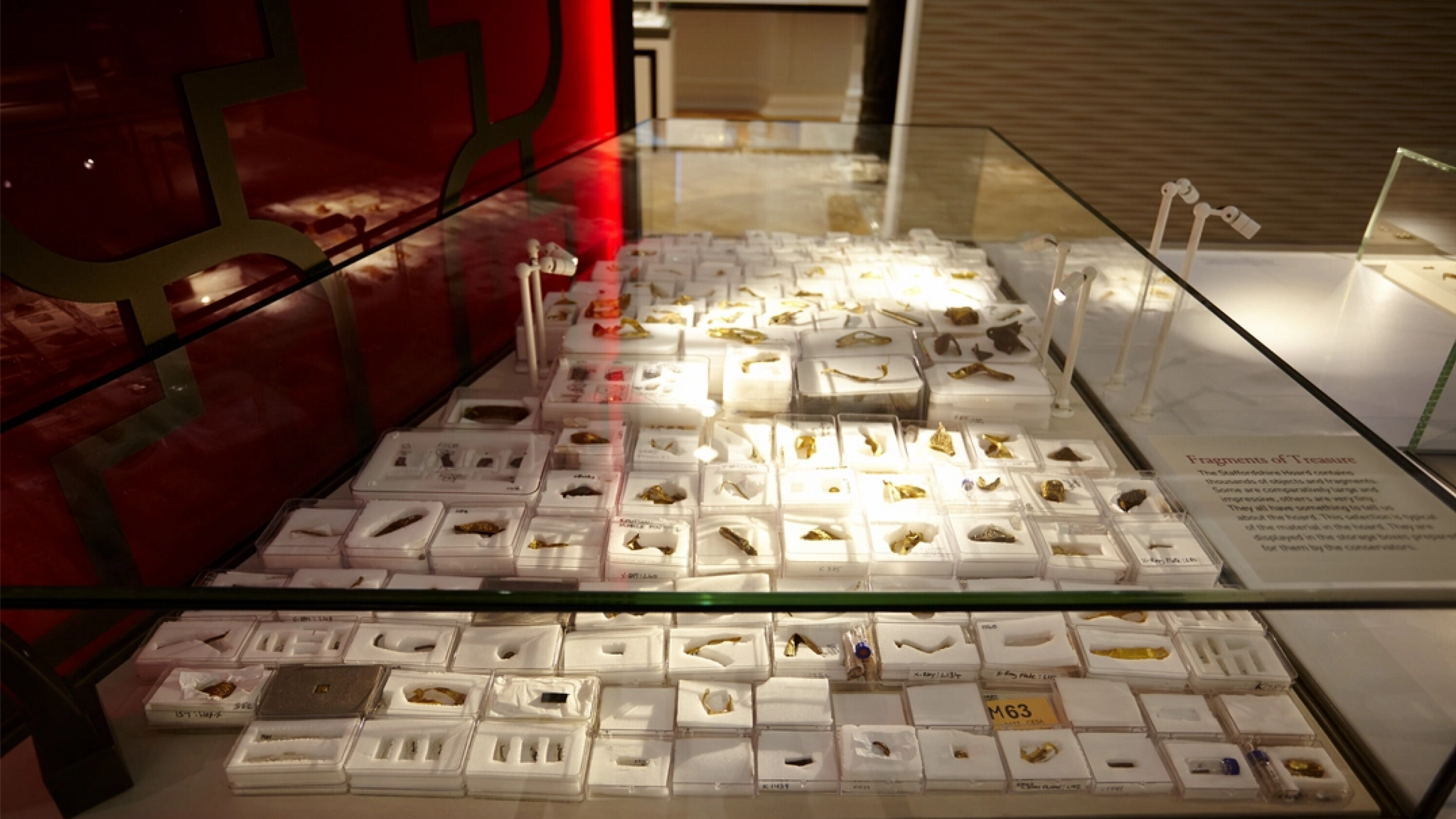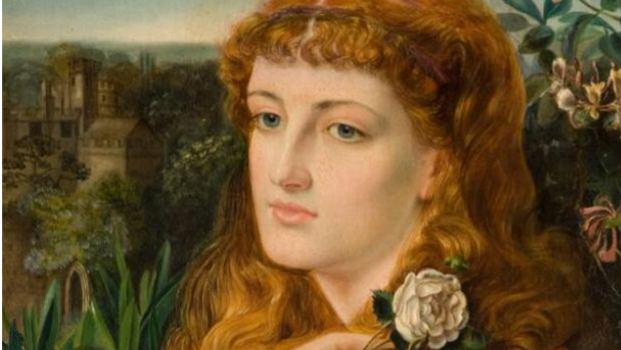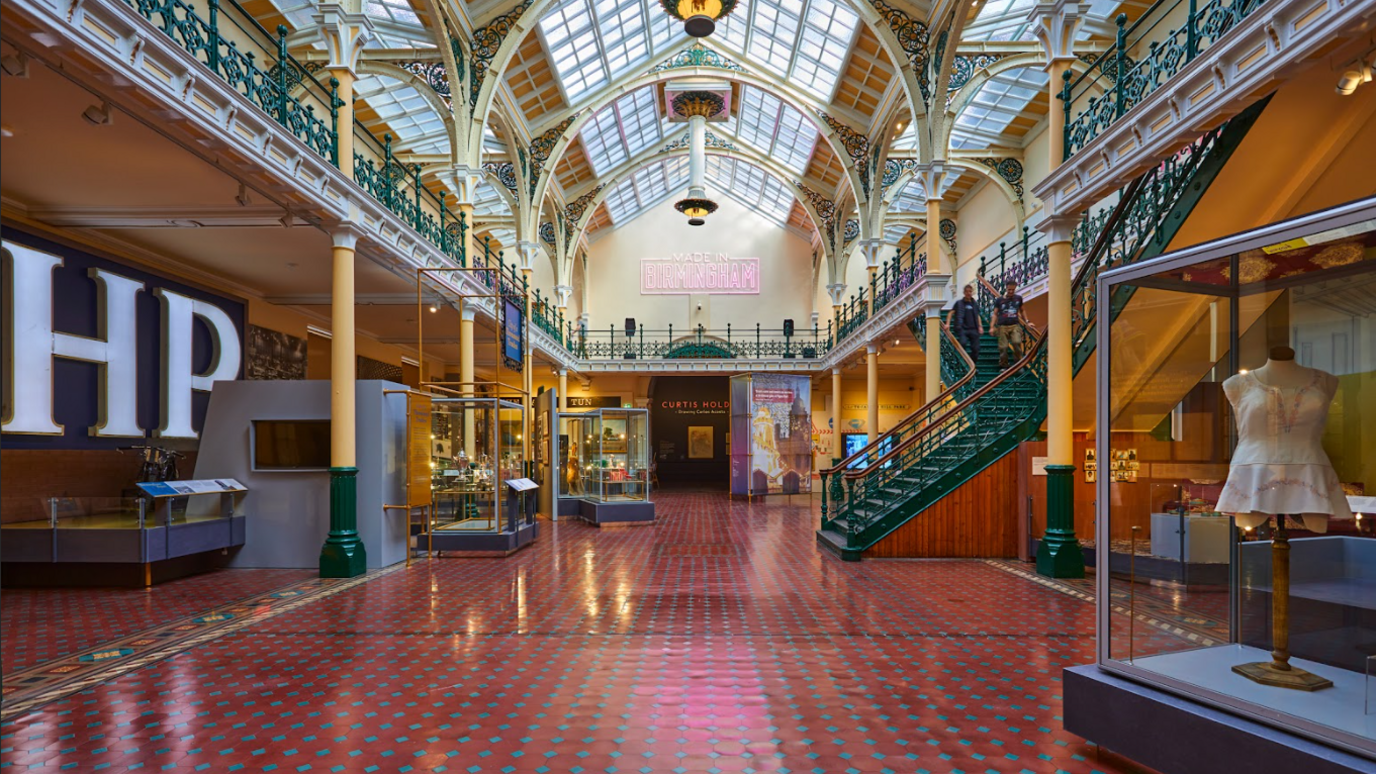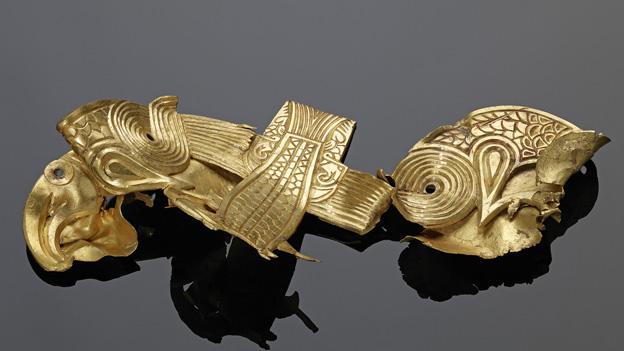Anglo-Saxon hoard on display as museum reopens

The Staffordshire Hoard is the largest collection of Anglo-Saxon gold ever found
- Published
The Staffordshire Hoard is back on display as Birmingham Museum & Art Gallery completes another phase of its reopening.
Visitors will have unrestricted access to the Anglo-Saxon treasure for the first time since 2020, following the museum's four-year renovation project.
It is the largest hoard of its kind ever discovered and includes hundreds of intricately crafted gold items buried about 1,400 years ago.
Sara Wajid and Zak Mensah, co-chief executives of Birmingham Museums Trust, said: "It's very exciting to be at a point in Birmingham Museum & Art Gallery's phased reopening when we can welcome visitors through our doors to see these works of art back on public display."
The museum has also unveiled four refurbished galleries showcasing its Pre-Raphaelite collection.
Entry to the museum and both displays is free.

Emma Sandys' Young Woman with a Rose painting is one of those on display
The Staffordshire Hoard was found by metal detectorist Terry Herbert in July 2009, in a field in Burntwood, Staffordshire, and was valued at £3.3m.
The museum said research revealed that about a third of the gold fragments had come from a rare helmet, which experts spent 18 months replicating using cutting-edge technology and ancient craft techniques. The replica is on display in the gallery.
The exhibition also includes hands-on displays, allowing visitors to learn how the hoard reveals links across early medieval Europe.
Younger visitors can step into Anglo-Saxon life in the interactive Mead Hall, through traditional games, dressing up and storytelling.
Get in touch
Tell us which stories we should cover in Birmingham and the Black Country
Follow BBC Birmingham on BBC Sounds, Facebook, external, X, external and Instagram, external.
Related topics
- Published23 October 2024

- Published12 July 2015
